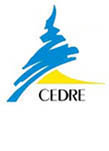Entrance fees, royalties, margins
Welcome to FranchiseLand® > Become a franchisor > Franchising Financial framework > Entrance fees, royalties, margins
(Refer also to the free budgeting method)
While creating a franchise network, we must define these financial parameters, which specify the specific charges of the franchise and that will be borne by the franchisees.
Entrance fees
The entrance fee is the initial payment to the franchisor who grants the franchisee an exclusive right to exploit his concept in a limited geographical and temporal area. The franchisor then transfers its know-how and trains its franchisee. The materialization of the transmission of know-how appears most often in the form of bibles and operations manuals.
The calculation of the entrance fee is subject to various parameters and constraints, such as pricing positioning and market strategy vis-à-vis competitors, the equilibrium and compatibility between these prices and the overall investment of the franchisee.
Indeed, the price compensates the initial investment required of the franchisor to develop the concept and must cover the costs of marketing, recruiting franchisees. The entrance fee allows the self-financing of the development.
Olivier Gast believes that an entrance fee has two parts:
a) The entrance fee which funds all initial assistance until the opening of the outlet. The opening of an outlet must not cost anything to the franchisor (least of all because it will lead to opening a new franchised outlet and allow the latter to succeed)
b) The other part of the entrance fee actually will depreciate part of the franchisor's initial investment (which will be depreciated with the number of openings), a part of the transmission of know-how and a access key to success.
This part of the entrance fee is exponential to the acceleration of the development.
Is it not normal that the 300th franchisee pays more entrance fees than the 10th one?
The more the network grows, the more security it provides to the franchisee, the more the franchisee will pay it (security is always very expensive)
It is rare that at the start of the business, the franchisor is able to realize a substantial profit on the entrance fee after payment of the launching expenses, the network development and the amortization of the concept, hence a very reduced net income. But these revenues resulting from entrance fees will also tend to increase later, especially when the concept is already developed and that the number of franchised units will be increased.
The royalty fees or royalties
The fee, usually calculated as a percentage of sales (excluding taxes and / or including taxes, but also fixed depending on the sector of activity, hairdressing for example), remunerates the specific and continuous services rendered by the franchisor to the franchisee. It is set according to the expected remuneration of the franchisor, but also the threshold of endurability of the operating account of the franchisee through the projected cash flow.
The academic rule is that the franchisor must have a margin of 50% on royalties. For example, if the franchisor can finance the costs of its services, animation, continuous and regular assistance to the franchisee, this amount raised to 2% should be multiplied by two, if the continuous relationship costs 2% (and the profit of 2 %), the royalties will amount to 4%. This ratio is vital in the franchises that only live on this (franchises services to individuals for example) as opposed to distribution franchises, which already enjoys a margin on products.
This charge may include a fixed and a variable to be more progressive or adapted to each phase of development of units of the network. It is in this setting should be the main scope and effect of financial leverage of the franchisor, since the income normally increases under the combined effects of growth in the number of units of the network and the increase in number of business by these units.
Participation to advertising costs
Most of the time calculated as a percentage of sales, participation in the advertising costs can be separated between the local and national advertising.
The budget devoted to advertising can be a real enrichment of the franchisor, but should be affected, in full transparency vis-à-vis the network, to the actual promotion of the brand, products and activities. The increase in the number of units is also a lever for the advertising budget. As the number of contributors to costs of advertising is increasing, the pooling of resources allows opportunities for which an independent alone could not have.
For example, Alain Afflelou spends a budget of 20 to 30 million euros in tv advertising funded by its network?
Logistic margins or margins on products
In the financial organization of the franchise, we must also take into account the margins taken back to the franchisor arising from:
- Either margins on installation logistics or rear rebates from equipment or materials suppliers;
- Or margins on operations logistics or discounts or rebates granted to the franchisor by the franchisor’s products suppliers or others (often, of course hidden margins - luckily, thank you to the Chinese factories...)
The franchisor who also provides products through a purchasing centre has the choice to grant more or less attractive margins for its franchisees, or to locate a margin level higher than its profit but this balance is very delicate.
In the case of the master franchise, the pyramid scheme of the actors in this system will further enhance the leverage effect. Indeed, the franchisor is entitled to a percentage of entrance fees collected by the master franchisee in each sub-franchised unit abroad, plus the payment of an entrance fee for the acquisition of the master franchise (the master fees).









